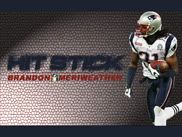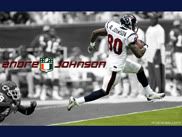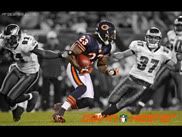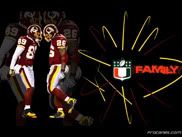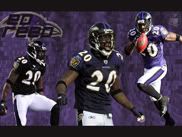CLICK HERE TO ORDER!
Brian Barton
Cards activate Barton from disabled list
Sep/09/08 01:05 AM

Barton, however, is still limited in what he is able to do on the field. Manager Tony La Russa said that Barton will likely not hit for the time being. Barton can run, so he may be used exclusively as a pinch-runner in the short term.
"I think he would just be used to run," La Russa said. "He is cleared for that."
When Barton arrived at Busch Stadium on Tuesday, it was not yet determined whether he would be activated. Following pregame activities, however, he was cleared for limited action.
When Barton is able to participate fully, it will be a boost for the Cardinals, who do not have an obvious starter in center field against left-handed pitching. Joe Mather is out for the year, Skip Schumaker has struggled against lefties and Rick Ankiel is limited to part-time duty due to an abdominal strain. La Russa prefers not to use Ryan Ludwick in center at this point in the season, given that Ludwick is reaching career highs in playing time.
Barton Put on the 15-day DL
Aug/26/08 09:07 PM
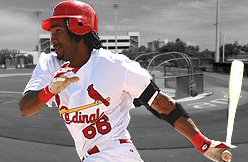
Barton is hitting .269 with two homers and 13 RBIs in 130 at-bats.
He was injured beating out a bunt for a single during a career-best three-hit game on Sunday.
Outfielder Nick Stavinoha, batting .337 with 16 home runs and 74 RBIs at Triple-A Memphis, was recalled for his third stint with the team.
He was batting .200 (5-for-25) with four RBIs with St. Louis.
(chicagoribune.com)
Barton leaves with oblique strain
Aug/24/08 12:15 PM
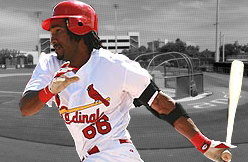
Barton had a career-high three hits in the game, but exited after suffering the injury while beating out a bunt in the sixth.
In 69 games this season, the rookie Barton is hitting .269 with two home runs and 13 RBI.
(sportsnetwork.com)
Barton back in the big leagues
Aug/17/08 10:15 PM

Before Barton sustained a wrist injury in July, his playing time with the Cardinals had dwindled to almost nil. From May 9 until he was placed on the disabled list on July 6, Barton got 70 at-bats in the span of 53 games.
So when it came time for his Minor League rehabilitation assignment, the Cardinals made sure Barton took every single day of it. That, of course, also helped ease the roster crunch that comes with trying to carry a Rule 5 Draftee, which is not an insignificant element.
But Barton got 73 at-bats in 20 days, more than he'd received in his last eight weeks with the big club. And he hit well. Though his numbers tailed off at the end, he still batted .260 with a .349 on-base percentage and a .466 slugging percentage at Triple-A Memphis.
"The last couple games got me, but it felt good to get some at-bats and get a groove back," Barton said. "Hopefully I can carry it to the rest of the season."
The Cards' outfield situation looks different for Barton than before he left, as Joe Mather has emerged as an additional right-handed option. But Barton still figures in the plans, and he'll try to help the Redbirds' playoff push over the final 35 games.
(mlb.com)
Barton ready to return from DL
Aug/14/08 02:03 PM

The reason for the quandary is that Barton is a Rule 5 player whom the Cards acquired from Cleveland. Rule 5 Draft picks must stay on the 25-man roster all season (other than the disabled list or a Minor League rehab assignment) or be returned to their former team.
"Something is imminent," Cardinals manager Tony La Russa said before Wednesday night's game against the Marlins, but added that he needed to discuss Barton with general manager John Mozeliak before any decision could be made.
The Cardinals presently have a full house in the outfield with Ryan Ludwick, Rick Ankiel, Skip Schumaker and Joe Mather, and recent addition Felipe Lopez has shown he can play there as well.
"That's something I can't worry about," said Barton, alumnus of nearby University of Miami. "I have to do a job. That's either cheerleading right now or out on the field playing."
Meanwhile, Barton has been doing a lot of walking in and out of the Cardinals' clubhouse, watching television on one of the four sets in the room and working out. He wanted to take batting practice on the field on Tuesday night, before a heavy rain prevented him from doing so.
"All I can do is stay ready," he said.
Before he was placed on the DL with the fracture, Barton hit .246 in 63 games this season. He had two homers and 11 RBIs in 122 at-bats, with three steals. He hit .260 with three home runs in 19 games for the Triple-A Memphis Redbirds.
When the Cardinals plucked Barton from Cleveland, he was coming off knee surgery which had put him "in limbo" with some teams, he said. Not the Cardinals. And now he is healthy again.
He is not lacking for confidence, whatever happens soon.
"I feel like I've worked hard to get here and it's well-deserved," he said. "But I also feel I need not stop here. I want to do more."
(mlb.com)
Barton rejoins team, not yet activated
Aug/12/08 12:49 PM

Barton reached the 20-day limit on his minor league rehab assignment after hitting .260 with three homers in 19 games at Triple-A, but as a Rule 5 pick he must either remain on the MLB roster or the DL. "We'll work him for a day or two, get an eyeball on him for ourselves," manager Tony La Russa said. "At some point soon he'll be activated. We want to take a look at him."
(rotoworld.com)
Barton to begin rehab assignment
Jul/23/08 06:26 PM
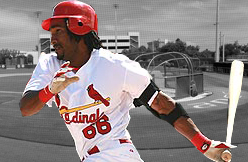
(kffl.com)
Barton Placed on DL
Jul/06/08 05:38 PM
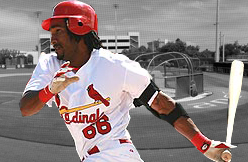
"We're in a position where we can get a few games up on the Cubs," Barton said. "If I'm not healthy, I'm not as good of an asset to the team as if I'm healthy."
(mlb.com)
Faster Than a Speeding Rocket Scientist: Cards rookie Brian Barton chooses baseball over aerospace engineering — for the time being.
Jun/27/08 05:15 PM

He's pretty good at both.
The 26-year-old Los Angeles native attended the University of Miami on an academic scholarship paid for by Boeing and majored in aerospace engineering. Barton, who has one semester of coursework remaining before he completes his degree, walked on to the university's elite baseball program and eventually led the Hurricanes squad to an eighth-place finish in the College World Series his junior year and batted a team-high .371 as a senior.
Now in his first season in the big leagues, Barton has seen his popularity with St. Louis fans skyrocket thanks to his broad grin, flowing dreadlocks and seemingly effortless speed on the base paths. After seeing scant playing time early in the season, he has begun to find his way into the starting lineup with increasing regularity.
Seated in front of his locker at Busch Stadium before a recent home game, however, Barton explains that he wants to be remembered for something other than his brainy background and athletic achievements. "I just want people to know me for more than just a baseball player or an engineer," he says. "I'm a broader person than that."
Barton says his favorite thing to do is travel. He visited Ethiopia while in college; he has a tattoo outlining the continent of Africa on his arm. ("I just have pride in my culture and where my ancestors came from," he says.) He's also done Europe (favorite stop: Munich) and plans to visit Australia and Japan in the upcoming off-season.
He likes old soul and R&B. That explains his choice of Sam Cooke ("A Change Is Gonna Come") as his at-bat music. "It's meaningful to me," he says. "It teaches patience through all the ups and downs. Whether it's on the field or in society, you have to have hope and faith that things will turn around. I like all types of music, but more so as I've grown older I appreciate that type of music more. It's more pure to me."
Barton was born and raised in economically deprived South Central Los Angeles, the part of town where Boyz n the Hood was filmed. He has three sisters and two brothers; the latter pair eventually went on to play college football. He attended Westchester High School, which is known more for its lengthy roster of alumni athletes (including former NFL linebacker Ken Norton Jr. and LA Laker Trevor Ariza) than its aerospace magnet program, which enrolls about 350 students each year. On the baseball field, he was a two-time all-conference selection, leading the Comets to a league championship his senior year. He played safety and wide receiver on the football team and ran the 400-meter for the track squad ("mostly just to stay in shape," he says). In the classroom, his 3.7 GPA helped net an internship in the satellite-systems department of Boeing's offices in El Segundo.
As a youth Barton took part in Major League Baseball's Reviving Baseball in Inner Cities (RBI) program. John Young, a former major leaguer who founded the program in 1989, remembers Barton well. In fact, Young says, Barton used to live just a few blocks from his house in South Central.
"I'm pushing 60 now," says Young, who recalls Barton as a "free spirit" and "a very bright young man." "So I tell these stories a lot of kids have never heard — I talk about Mickey Mantle and Ozzie Smith and tell a lot of inside jokes about them. Most of them, they'd go over the other kids' heads. Brian would get them. He'd do his laugh, but he'd try not to acknowledge it.
"The thing about RBI is that it's about more than baseball," Young adds. "Our mission isn't to develop major-league baseball players, it's to develop good citizens. We use baseball as a carrot to get kids learning academic and social community skills. Basically, Brian is what we're looking to do."
After high school Barton was chosen by the Dodgers in the 38th round of the MLB draft. Rather than sign to play in the minor leagues, he opted to take his Boeing scholarship to nearby Loyola Marymount University. He soon grew restless, however, making the switch to Miami after his freshman year, attracted by the university's proximity to NASA's space program and its unique blend of athletics and academics.
"I just got tired of being in LA," he explains. "Moneywise, I had a scholarship going to Loyola, and Miami is quite a bit more expensive. But it was my first choice. I wasn't happy where I was. I felt in order to be happy I had to follow my heart."
As a transfer, he was required by NCAA rules to sit out a season of baseball. When he got his chance to play, he suffered a hand injury that kept him out of the lineup for part of his junior season. And he struggled to balance the rigorous engineering curriculum with baseball, widely recognized as one of the most challenging sports for student-athletes owing to its exhausting travel and practice schedule.
"When you're on the road, you don't want to study," Barton says. "The last thing you want to do is open a book after the game. No matter how many books I brought, I didn't open one."
Singiresu Rao, the chair of Miami's mechanical and aerospace engineering department, says the major is arduous even for students who aren't spending their evenings in the batting cage. "With term papers, projects and exams, the average student has to work about 60 to 70 hours a week," says Rao, noting that the program admits only 30 people each year. "If they're playing sports, they have to manage time very well."
Rao taught Barton's aerospace structural design course, in which students learn skills like how to design airplane wings with the proper size and thickness to keep a craft airborne. "I found him to be very punctual," Rao says. "He used to maintain time, whereas other students came late. He was always diligent. His performance may not have been at the top of the class, but he always put forth a tremendous effort."
Barton says college was the first time in his life when his dual career paths became a novelty.
"People would emphasize that instead of my performance," he says. "I remember one time I had a four-for-four game and we won, but afterward all the reporters were like, 'Hey Barton, tell me about your major.' It's good to have that story, to have kids who look up to athletes be able to say they can go to school and get an education and still be successful in sports. I'm not ashamed of my major, I'm not ashamed of what I want to do. I just may possibly do something else. Let me come to that conclusion."
RBI founder John Young believes Barton's commitment to his education hindered his development as a ballplayer. "When he was in college, he'd do internships at Boeing instead of the high-profile summer leagues that other prospects go to," Young says. "If Brian would not have been so academic, he probably would have been a first-round draft choice."
"People just felt like his commitment was to his education and not likely to the game of baseball," says Cardinals general manger John Mozeliak, explaining why Barton went undrafted out of college. "What ends up happening is players that have options — alternative career choices if you will — teams will shy away. In baseball there's a lot of failure; you have to understand the adversity that's in this game and the dedication it takes to overcome that."
Barton went on to sign with the Cleveland Indians and worked his way through their minor-league system to the AAA level at Buffalo. In December 2007 the Cardinals paid the requisite $50,000 to acquire him in the Rule 5 draft, a process that prevents teams from stockpiling minor-league talent by allowing unprotected prospects to be picked up by opposing teams.
"They are players that are maybe not good enough to be worried about losing but may have some value," Mozeliak says of Rule 5 picks. "I suspect Cleveland felt that since [Barton] had sustained a knee injury the year before, he might slide a little in productivity. We liked his offensive ability, his ability to get on base and his ability to run. We factored in that he could play multiple outfield positions and he just seemed like a very attractive pick."
Rule 5 draftees come with a significant contingency: In order to hang on to Barton, the Cardinals must keep him on their active roster for the entire 2008 season. Barton made the big-league club on the final day of spring training — by a whisker. Now, nearly halfway through his rookie year, he has appeared in 56 games and has 27 hits in 110 at-bats (including one in his first major-league plate appearance). He says he's still getting to know St. Louis and hasn't had much time to get out and experience the city. He lives about five minutes from Busch Stadium.
And for entertainment? "I don't know if you'd call it fun, but I read, I write. Sometimes if I've got something on my mind, I just write."
When his teammates aren't subjecting him to rookie mistreatment, they say Barton keeps to himself. "He's a good teammate and a good guy to be around," says second baseman Adam Kennedy, whose locker is next to Barton's. "But obviously me and him have no common factors when it comes to talking about [rocket science]."
Manager Tony La Russa praises Barton's "high-average stroke" and says the rookie has done an excellent job of being prepared to play every day in a crowded Cardinals outfield. Of Barton's reputation as the smartest guy on the team, La Russa says, "You can tell when you talk to him he's an intelligent guy. But the way he uses that intelligence on the baseball diamond — that's for real. He's very aware."
Reserved and soft-spoken, Barton plays down most praise that comes his way. When asked if he believes he's the fastest player on the team, a question that seems like a no-brainer for anyone who has seen him devour the base paths with the lengthy strides afforded by his six-foot-three frame, he says, "I just try to work with what I have and let the people who watch be the judge of that."
(Allows La Russa: "He and [shortstop] Brendan Ryan — that would be a pretty good race.")
As for his plans after baseball, Barton says he's thinks he'll go back and finish the last few classes that stand between him and a degree. After that, though, the future is wide open: "I just take it one step at a time. If I get back into [aerospace engineering] after baseball — if it happens, it happens.
"Right now I'm a baseball player. I'm just hoping to have a good season and help the team win. It doesn't get any simpler than that."
(riverfronttimes.com)
Appreciating Brian Barton
Jun/26/08 05:11 PM

There’s been some talk lately about what’s best for rookie Cardinals outfielder Brian Barton. As a Rule V draftee, he can’t be sent to the minors without first being offered back to his former team, the Cleveland Indians. The teams could work out a deal, and the Cardinals could send a player/prospect to Cleveland to gain unconditional rights to Barton, but nothing is in the works on that front. Ideally, Barton would benefit and develop from regular ABs, and that certainly would help bring out his power — but he simply won’t get those starts at the MLB level.
In that context, I think what Barton is doing is fairly impressive. There are a lot of veteran players in this game who don’t play well after sitting for long stretches. Without a lot of ABs, swings get rusty and it’s difficult to establish consistency. This is especially problematic for a young player who is used to playing every day in the minors, only to come to the majors to park on the bench for games at a time.
Barton, for example, recently received only four ABs in an 11-game stretch.
But when manager Tony La Russa finally put Barton in the lineup in recent days, the rookie responded magnificently with strong performances Sunday in Boston and Tuesday in Detroit.
In the two games, Barton went 3 for 7 with two runs, two doubles, a homer, three RBIs and a stolen base.
To get back into the flow and produce so quickly after being virtually idle for a couple of weeks is a positive reflection of Barton. And it does reveal his value.
Barton has also done a fine job as a pinch hitter. He’s 8 for 27, .296. Only five players in MLB have more pinch hits, and only six (minimum 20 ABs) have a higher BA than Barton. And again — isn’t reliable pinch-hitting supposed to be the domain of a veteran?
I’ve seen people write and blog and heard them say that maybe it’s best to just part ways with Barton because (1) he won’t get the time he needs up here; and (2) the Cardinals can’t send him down; (3) he is of limited value to the team.
I respectfully disagree. Barton, 26, does have value to this team, right now, as a guy who can come off the bench and make a difference, either as a PH or a spot starter vs. LHP.
Keep in mind that this Cardinals OF generally doesn’t stack up well against LHP.
Let’s take a look (all stats through Tuesday):
Ludwick: .244 / .333 / .535 - OPS of .866
Barton: .246 /.375 / .385 - OPS of .760
Ankiel: .211 / .263 / .394 - OPS of .658
Schumaker: .169 / .250 / .185 - OPS of .435
Duncan: .115 / .148 / .192 - OPS of .340
Barton also has speed, which isn’t in great supply on this team.
And though his arm isn’t very good, in terms of range and reliability he’s done fine in LF — and has a +1 rating so far by the John Dewan - Bill James system.
Unlike some of his OF colleagues, Barton will take a walk against LHP. His OPS vs. the LH isn’t great, but it is second-best among Cardinals outfielders. The Cardinals could use another good bat out there, and maybe that will be Colby Rasmus before long. Barton can’t play every day; too many ABs would likely expose him. There is a fine line here, and I’d like to see La Russa give Barton a little more run.
But Barton hasn’t done anything so poorly that it warrants cutting ties with him. Unless I’m missing it, I just don’t see a bunch of guys out there who can get something going after sitting and waiting, sitting and waiting.
And Barton, to this point, has a higher BA, OBP and SLG than Chris Duncan, who continues to get the ABs.
(stltoday.com)
Barton falling out of favor?
Jun/23/08 02:11 PM

So what of Barton then? What is his future with the Cardinals?
He started the season off well, being very successful in mostly a pinch hitting role for the first month of the season, going .333/.409/.462 in March/April. Since then he has tailed off significantly and steadily. That being said, his numbers split between games he starts and those he pinch-hits in are wildly different. Barton is hitting .290/.333/.419 as a pinch hitter. Compare that to only .227/.337/.307 in games he starts. Is he another Lenny Harris? A guy who can’t get it done on a regular basis, but for his one at-bat per game, he can put a charge into a line drive? He’s certainly the picture-perfect example of a pinch-hitter, going in there and swinging at 43% of first pitches that he sees in his plate appearances.
All of that brings me around to my point. Barton has had a horrendous June thus far, and has only appeared for four pinch-hit at-bats since June 8th. No starts since then, and no extended substitute appearances. Granted, he plays for Tony LaRussa, so the string of right-handed pitchers has surely played a role in Barton’s disappearance from the outfield rotation.
But that doesn’t tell the whole story either. The Cardinals have essentially employed a roster with only four outfielders since Joe Mather was sent down on June 14th, because Chris Duncan is taking all of the starts at first base, in Albert Pujols’ absence. Despite the narrowed outfield roster, the Cards have trotted out the same outfield of Skip Schumaker, Rick Ankiel, and Ryan Ludwick every game since June 10th. I’m not saying that’s necessarily a bad outfield for the Cards to put in the lineup, it just piques my interest that Barton can’t get a start in two weeks of games.
Additionally, the platoon argument doesn’t seem to hold up in this case as, like Ludwick, Barton has hit right-handed pitching better than lefties on the season.
Ultimately, Barton seems to still have upside. He’s still learning to hit Major League pitching, after all, he didn’t have an MLB at-bat to his credit prior to this season. He seems to be a plus defender in left field, posting above-league-average range factor and a .964 RZR (which is pretty ridiculously high, when you consider that Ankiel’s .947 RZR rating leads the National League among all qualified fielders).
But are the Cardinals willing to let him hold down a roster slot for this entire season just to hang onto him? Would they then option him back down next season to try and further his development?
Rumors swirling before the Rule 5 draft had San Diego trading up to take Barton, which obviously never happened. But would the Pads still be interested in him now, given that he would still have to remain on their 25-man roster to avoid return to the Indians? Do the Padres have anyone that would interest the Cards who merits giving up on Barton’s potential at this stage? Tadahito Iguchi comes to mind, but I tend to think Barton’s upside outweighs any possible upgrade Iguchi may or may not represent over the current 2B situation in St Louis.
Could the Cardinals turn Barton into a solid left-handed bullpen option, say from the Pirates (John Grabow or Damaso Marte or the Rockies (Brian Fuentes)?
It would seem that Barton’s recent relative absence from action would indicate the Cards are starting to lose their sweet tooth for the guy, where some of these other teams who are not in the race and can gamble on upside might be interested. Moving Barton now would make room for Mather to get a true test in the bigs, as well as Nick Stavinoha who is setting the world alight with his bat down in Memphis, and the other name just around the corner, Colby Rasmus.
Not to mention the unenviable task of trying to decide what to do with Duncan once El Hombre returns (get well soon Albert!)…
(pitchershiteigth.com)
Brian Barton Update
Jun/19/08 07:20 PM

Barton was signed in 2004, but as he'd stayed in school in order to get his degree, he didn't see any actual play time that season. In 2005, he spent most of his time in single-A, with a move to the double-A franchise in 2006. Though he eventually made it as far as the triple-A Buffalo Bisons, the Indians didn't bring him to the big show in 2007, which left him open for a Rule 5 pick. He was chosen tenth, by the St. Louis Cardinals.
Barton made the 40-man roster for 2008, and made his major league debut - finally - on April 1st, singling in his first at-bat for the Cards. His season started out well, but his part-time outfielder position has put a crimp in his development, and his numbers haven't quite been as good as the season has progressed. Fans and management alike hope Barton finds his groove soon and returns to his previous production.
(talkstlouissports.com)
Barton hits his first homer
May/28/08 08:11 AM

Barton's homer against right-hander Shawn Chacon in the fifth inning, one of the few highlights in the Cardinals' dismal 8-2 loss to Houston, landed in the Astros' bullpen. The policeman retrieved the souvenir and flipped it to a fan sitting in the left-field bleachers.
"I didn't even know it was in the crowd," said Barton, who was fortunate enough to get the ball after a member of the Cardinals' media relations team made a telephone call. "It's good that I got it back. It means a lot to me.
"One of the security guards or ushers got it for me. I signed a few hats for a couple of kids. I'm thankful they gave it back. I want to say thank you to them. I don't know who they are. It's a good feeling, but at the same time, it would have been better if we would have had a win."
Barton was appearing as a pinch-hitter for Braden Looper when he connected on Chacon's first pitch with one out in the fifth. The 390-foot drive made it 8-2.
"I feel like it's been a long time coming," said Barton, whose homer came in his 78th at-bat. "I happened to get a good pitch to hit. He left a slider up and I put a good swing on it. That was that.
"It was kind of like I was on a cloud. I'm quite sure my family back home in Arkansas is pretty happy and fired up, too."
(bnd.com)
New role has Barton struggling
May/27/08 09:01 PM

Barton got off to a hot start in his first Major League season, batting .333 with a .409 on-base percentage and a .462 slugging percentage in April. He's just 5-for-33 in May, though, as limited playing time has taken its toll on his approach. It's the first time in Barton's career that he's been a part-time player.
"Gradually, it was coming," Barton said. "I felt it. But it's one of those things where you've got to get it before it gets you. At the beginning of the season, it was easier, coming from Spring Training, playing every day. I was still kind of in a groove. Not being used to it, I never had to really adjust to it."
One area where Barton's slump really showed was in pinch-hitting. He rapped base hits in four of his first nine pinch-hit at-bats, then went into a 1-for-8 slide. Barton picked up a pinch-hit in Wednesday's series finale against the Padres, though.
"My last at-bat to get that base hit, it took a little pressure off me mentally," Barton said. "The game before, that was probably the first game all year when I went home feeling [terrible]. I normally don't really get down on myself. ... But I felt overall that I had no plan, and that was the first time that I felt lost."
Barton is caught in a tough situation. He's the fifth outfielder in a five-man rotation, and each of the other four players has been at least fairly productive.
So while he would like to get at-bats in order to get back on track, he must get back on track in order to earn those at-bats.
"He's a little in between at times," manager Tony La Russa said. "He's taking pitches. Most of the time, when he was taking pitches, they were balls. And usually when he swung, he swung at strikes. Now he's swinging at balls that aren't strikes. So he's a little bit in between."
(mlb.com)
Cardinals Brian Barton wants to go to Space
May/01/08 10:27 PM

"The sky's the limit," he likes to say, and in this instance, he does so standing in front of his locker in the St. Louis Cardinals' clubhouse. He takes the cliché literally and figuratively, the former in his desire to float in the atmosphere and the latter in the career he has carved out in the meantime.
The sky? It's for the African-American kid from South Los Angeles who grew up surrounded by basketball, football and everything but baseball. The one who didn't get drafted out of the University of Miami after a productive college career because teams were worried that he was going to finish his degree in aerospace engineering and hook on with Boeing, where he interned, or perhaps NASA. The one who later signed with the Cleveland Indians for $100,000, put up gaudy numbers at every level and still couldn't crack the 40-man roster because they worried about knee surgery he had last fall.
Left unprotected in the Rule 5 draft, Barton fell to the Cardinals, manna in the form of a 6-foot-3, 190-pound outfielder with pop, speed and, best of all, brains. He has settled in as their fifth outfielder, though he has played plenty in manager Tony La Russa's mix-and-match scheme. He's batting .324, scored four runs and driven in four in 37 at-bats.
And though teams coveted Barton for his tools, he sees something else paramount to his early success.
"My strongest asset is mental," Barton said. "I work on being patient and always being ready, and you have to be in this role.
"I like to invest in knowledge. Anything that can help me learn about different people, different things. That's what drives a lot of what I do and why people may think things I do are out of the ordinary. You can't take away things you know."
That ethos guides Barton in and away from baseball. He started college at Loyola Marymount in L.A. on an academic scholarship but transferred to Miami for its blend of academics and athletics. Once there, the travel bug bit, and between his junior and senior years, Barton took a solo sojourn to the place that seemed most foreign to him. There's no point in traveling, he figured, unless it delivers a good jolt to your senses.
Ethiopia it was. A professor of Barton's had a friend who helped him find a hotel. Barton tried to learn some Amharic. He spent two weeks walking around, trying his best to blend in, though the mini-Afro he sported at the time gave him away.
"I wanted to go out there and see if I could do it, and I did," Barton said. "I had gotten over the hump. So, where next?"
Europe. Check. The Caribbean. Check. Barton had to temper his wanderlust last offseason because he took a few courses at Miami. His goal is to visit every country in the world. He's got 190 or so to go.
"I'm about 10 deep," Barton said. "This offseason I'll do a few. Hopefully, I live a long enough life to do it."
Keeping a spot in the big leagues can certainly fund such journeys. Most Rule 5 picks end up returned to the teams from which they were selected, and those who stick generally do so in small roles. Johan Santana bided his time in mop-up duty for Minnesota before later spending half a season in the minor leagues to hone his game.
Barton is an exception. The Cardinals look brilliant for picking him and have plans for him. Had left fielder Skip Schumaker not gotten off to such a great start, Barton would be getting more at-bats.
"He's earned his roster spot, which is the best compliment I can give him," La Russa said. "Sometimes you take a Rule 5 guy and you're investing in the future as long as he can hold his own, but he's made this club. He did it in spring training, and he continues to do it by his play."
Last week, Barton pinch hit in the ninth inning of a tie game against Houston and drew a leadoff walk that contributed to the winning run. Two days earlier, he stroked two hits, drove in two runs and pushed the Cardinals ahead in a victory against Pittsburgh.
For now, this baseball racket is working just fine. Barton has one semester of classes remaining, and the only time Miami offers them is during the season. So the degree can wait.
"It doesn't mean sometime later in his career he can't pursue the other," said La Russa, who is familiar with potential second careers, having earned his juris doctorate in the offseason when he was a player. He went into managing instead of law, aware that such opportunities are scarce, and knows Barton faces the same decision.
"This is the only time he can pursue this one."
Ah, but what if? What if NASA called tomorrow and told him the next time the shuttle took off, he'd be on it? What if he needed to answer his ultimate hypothetical?
"If I had an opportunity to go, man, I'd want to go," Barton said. "If it came down to baseball or that, it'd be a hard decision. Good thing I'm not in that position."
No. Barton's in one, for now, that's plenty good, one that rivals where he'd be had he taken the other road. Flying high in the sky.
(yardbarker.com)
Barton's speed leads Cards to victory
Apr/22/08 02:52 AM
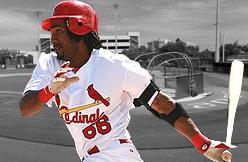
Barton gets off to fast start with Cardinals
Apr/07/08 11:01 PM

Manager Tony La Russa gave Barton his first start to rest struggling Skip Schumaker, who is nothing for 14.
The other two he earned, although La Russa, not wanting to bury Schumaker either and wanting to upgrade his defense late in the game, inserted Schumaker roughly halfway through the game on all three occasions.
"Baby steps defensively," said La Russa of his use of Barton. "Next time he gets out there, maybe he (goes) seven and by the middle of the season, he’s playing nine innings. I think he’s done very well."
Barton said, "I’m a competitor and obviously, you would like to stay in. But at the same time, if we’re winning, everything is fine. I just want to win.
"I feel like Tony knows what he’s doing out there. If it’s time for me to come out, I come out."
La Russa said Schumaker would play considerably on the seven-game trip to Houston and San Francisco that starts tonight at Minute Maid Park in Houston.
(stltoday.com)
Cards stick with Barton in leadoff spot St. Louis in midst of four straight games against lefty starters
Apr/07/08 02:02 AM

The 25-year-old Barton, a Rule 5 Draft selection from the Indians, got his first Major League start on Friday and had two hits, including a double. On Saturday, the left fielder had a triple among his three at-bats.
"It's just great having the opportunity to play, whether I'm leading off, whether I'm starting, whether I'm pinch-hitting, just for the coach to have confidence in me to contribute -- it says a lot and I'm thankful for it," Barton said before Sunday's series finale at Busch Stadium. "But at the same time, I have a job to do, and hopefully I continue to do that job so I can stay here."
Barton, playing left field, entered Sunday batting .444 (4-for-9) with a double, a triple and a run scored.
"He's hit a couple shots and he's helped us win, so we'll stay with it," Cardinals manager Tony La Russa said.
The Cardinals are in the middle of a stretch of facing four left-handed pitchers on consecutive days. Washington threw Odalis Perez on Friday, Matt Chico on Saturday and John Lannan on Sunday. For their home opener on Monday night, the Astros are expected to start Wandy Rodriguez.
Outfielder Skip Schumaker started the Cards' first three games in left field and at the top of the lineup. But the left-handed-hitting Schumaker, who batted .333 in 112 at-bats in 2007, is hitless in 13 at-bats this season.
La Russa said before Sunday's game that Schumaker is going to be the Cardinals' primary leadoff hitter. Schumaker has been a sixth-inning defensive replacement for Barton the last two games as well.
"I just see a bunch of right-handers coming up on our road trip, so I'm not worried about him missing a start here or there," La Russa said. "He's played both the last games, so he's staying sharp."
(mlb.com)
Brian Barton gets first start of season
Apr/05/08 04:28 AM
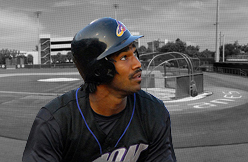
Odalis Perez, Washington's pitcher against the St. Louis Cardinals on Friday, is left-handed. The same is true of the Nationals' starters the next two days --Matt Chico on Saturday and John Lannan on Sunday.
"I'm anxious to get him going," Cardinals manager Tony La Russa said of Barton, who is in the leadoff spot after going 1-for-2 as a pinch-hitter. "This is a good time to get him going. I think it is."
Barton hit a double, looked very fast and has great bat speed. Glad to see him in the lineup today. Barton also singled off Zimmerman’s glove into the outfield, Miles to second. Barton also grounded out twice to end the inning.
(redbirdsnation.com)
Brian Barton revels in making the big leagues; videotapes big moment
Apr/01/08 06:23 PM
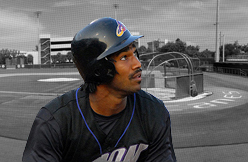
Toting a video camera he purchased at Wal-Mart the previous evening, Barton made sure all the pomp and circumstance of his first Opening Day as a major-league baseball player was caught on tape.
The 25-year-old rookie outfielder for the St. Louis Cardinals chewed up nearly 45 minutes of tape recording the pregame festivities Monday at Busch Stadium.
"I was going to (tape) it from the start," Barton said. "I went and bought a video camera last night. It was one of those things where I really didn't care what people thought.
"People say 'Act like you've been here before,' but you only get one of those moments. To me, it didn't matter how I looked. If I looked like a kid, then hey, I have one day to be a kid."
After the Cardinals' abbreviated workout Sunday afternoon at Busch Stadium, Barton visited a Wal-Mart and bought a small, hand-held digital camera costing around $200.
"I didn't need to go expensive," Barton said. "I just needed to get the memories."
Barton began taping a few minutes before he boarded the red convertible that paraded the players around the warning track. He kept taping as he shook hands with Cardinal Hall of Famers Bob Gibson, Ozzie Smith, Lou Brock and Red Schoendienst, then took his spot with the others players on the first-base line.
"I know everybody saw my video camera, but this only happens one time in your life," Barton said. "It was something where I wanted to be able to show my kids and in the near time, my friends and family back home."
Barton, who is single, lives in Los Angeles. He has 87 at-bats as the Class AAA level last year for Cleveland. The Cardinals got him from the Indians in the Rule 5 draft in December and was considered a long shot to make the team.
Now, he can't wait to make his major-league debut.
"I'm just looking to get on the field, period," Barton said. "Even if I have to pinch run from third. My mom is in town and I want her to see me play."
(bnd.com)
Barton's road leads to Busch Stadium
Mar/27/08 08:09 PM

On Wednesday morning, Barton was notified that he would be on the Cardinals' Opening Day roster. By the afternoon, even being hit in the nose by a curveball couldn't erase the smile from his face. Barton's circuitous path finally brought him to the place he was trying to get to all along.
"I think that's what I pride myself in, is not giving up and not thinking that there's only one way to get to where you need to be," he said. "Because there are so many roads that lead to one destination. The traditional road didn't happen for me, so I took another way around. And it worked out."
Barton enjoyed an outstanding career at Miami, capping his time there by being named to the College World Series all-tournament team in 2004. But no team drafted him, reportedly because of the fear he would be too difficult to sign. Barton had business opportunities outside baseball, and evidently the fear was that it would take too much money to coax him to play pro ball.
But playing pro ball was what he most wanted to do. So he played in the Cape Cod League over the summer and eventually signed with Cleveland.
"I'm not going to say I didn't still have the same dream, but it made the process a little more enduring," he said. "I felt like I had done pretty well at Miami to get an opportunity, and it didn't happen. But with that being said, I never gave up and I never settled. I took another route to get to where I needed to be."
Click here to continue reading...
Barton OK after being hit in face by pitch - Breaking ball glances off outfielder's head in seventh inning
Mar/27/08 08:22 AM

Barton, who was informed on Wednesday morning that he would be making the Cardinals' Opening Day roster, was struck in the face by a pitch in St. Louis' game against Baltimore. Fortunately for Barton, it was something of a glancing blow, striking him on the side of the nose and evidently not doing any serious damage.
"It got me pretty good, but it got me on the side, so it was a 'good' good," Barton said after the game. "I'm lucky there's no bone there. I don't know how it sounded. It didn't feel good."
Greg Aquino's pitch to Barton in the seventh inning was an offspeed offering, which also helped Barton come through the incident OK.
"It was a breaking ball," manager Tony La Russa said. "You don't [immediately] know exactly where it hits him, but it wasn't as scary as some."
Barton went immediately to the ground after he was hit, and head athletic trainer Barry Weinberg rushed out to tend to him. Weinberg helped Barton walk off the field, and Rico Washington took Barton's place in the game.
(mlb.com)
60 seconds with Cardinals outfielder Brian Barton
Mar/25/08 02:43 AM
Tom D'Angelo spoke to Cardinals outfielder Brian
Barton, a former University of Miami star who majored
in aerospace engineering.
You grew up in L.A. and the Dodgers drafted you in the 38th round in 2000 out of high school. Was it difficult to turn down your hometown team?
Growing up I always wanted to be a Dodger and I was a big Dodgers fan. But at the same time I felt like I wasn't ready mentally to take that jump from high school to the pro level so I felt it was in my best interests to go to college.
You played one year at Loyola Marymount and transferred to UM. How did an L.A. kid wind up in Miami?
UM was my first choice but academically I got more money to go to Loyola. After that one year I had to follow my heart and go where I wanted to be and be comfortable and happier.
Why aerospace engineering?
This is something I was set on since I was a kid. I have a love for space. I wanted to stay in that field.
A jock majoring in aerospace engineering doesn't quite fit the stereotype. What did people say?
More so people wondered how did I balance the two. That was the difficult thing, especially at a program like Miami where you have to excel in baseball but at the same time baseball was not always promised so you want to also excel in class. I had to find a happy medium for both.
What exactly do you do?
It's a broad field ranging from working on airplane to spacecraft. I had a few internships with Boeing where I was working on communications satellites.
Ever dream of being an astronaut?
I did when I was a kid. That's what made me want to stick in the field.
Is that desire still there?
If they gave me an opportunity I would be there in a heartbeat.
You were not drafted out of UM and but you were signed by the Indians as a free agent. The story is scouts thought you were not serious about baseball. True?
That was the word but the draft is so unpredictable you just never know. While it was going on it was frustrating, but once it was over I moved on. I had to take another route. If I would have pouted I wouldn't be were I am now.
(palmbeachpost.com)
You grew up in L.A. and the Dodgers drafted you in the 38th round in 2000 out of high school. Was it difficult to turn down your hometown team?
Growing up I always wanted to be a Dodger and I was a big Dodgers fan. But at the same time I felt like I wasn't ready mentally to take that jump from high school to the pro level so I felt it was in my best interests to go to college.
You played one year at Loyola Marymount and transferred to UM. How did an L.A. kid wind up in Miami?
UM was my first choice but academically I got more money to go to Loyola. After that one year I had to follow my heart and go where I wanted to be and be comfortable and happier.
Why aerospace engineering?
This is something I was set on since I was a kid. I have a love for space. I wanted to stay in that field.
A jock majoring in aerospace engineering doesn't quite fit the stereotype. What did people say?
More so people wondered how did I balance the two. That was the difficult thing, especially at a program like Miami where you have to excel in baseball but at the same time baseball was not always promised so you want to also excel in class. I had to find a happy medium for both.
What exactly do you do?
It's a broad field ranging from working on airplane to spacecraft. I had a few internships with Boeing where I was working on communications satellites.
Ever dream of being an astronaut?
I did when I was a kid. That's what made me want to stick in the field.
Is that desire still there?
If they gave me an opportunity I would be there in a heartbeat.
You were not drafted out of UM and but you were signed by the Indians as a free agent. The story is scouts thought you were not serious about baseball. True?
That was the word but the draft is so unpredictable you just never know. While it was going on it was frustrating, but once it was over I moved on. I had to take another route. If I would have pouted I wouldn't be were I am now.
(palmbeachpost.com)
Cleveland Indians could get Barton, Whitney back
Mar/15/08 01:46 PM
WINTER HAVEN, FLA. -- Unless the Indians can be
persuaded to do otherwise, they want outfielder Brian
Barton and first baseman Matt Whitney back at the end
of spring training. St. Louis selected Barton and
Washington took Whitney in December at the Rule 5
Draft.
Barton is having an excellent camp with the Cardinals. He's hitting .389 (12-for-34) with one double, two triples, two homers and six RBI.
Whitney is hitting .211 (3-for-17) with one double, one triple, one homer and six RBI for the Nationals.
A team that drafts a Rule 5 player must keep him on its big-league roster all year. If they don't, they must offer him back to his original club. In return, the Indians would have to give back half the $50,000 they received as compensation for each player.
If St. Louis and Washington want to keep Barton and Whitney, they can try to offer the Indians another player in place of them.
(blog.cleveland.com)
Barton is having an excellent camp with the Cardinals. He's hitting .389 (12-for-34) with one double, two triples, two homers and six RBI.
Whitney is hitting .211 (3-for-17) with one double, one triple, one homer and six RBI for the Nationals.
A team that drafts a Rule 5 player must keep him on its big-league roster all year. If they don't, they must offer him back to his original club. In return, the Indians would have to give back half the $50,000 they received as compensation for each player.
If St. Louis and Washington want to keep Barton and Whitney, they can try to offer the Indians another player in place of them.
(blog.cleveland.com)
Barton putting his career on a fast track - Outfielder blends power and speed with ability to get on base
Mar/14/08 07:58 AM
JUPITER, Fla. -- At one point last fall, it appeared
that Brian Barton would be the first player selected in
the Rule 5 Draft in Nashville, Tenn., at the Winter
Meetings in December. But offseason knee surgery
dropped Barton's stock, and the one-time Cleveland
Indians prospect wound up going to St. Louis with the
10th pick.
"I was excited about the opportunity," Barton recalled, "because it was going from a situation not knowing whether I would have an opportunity to be in the big leagues to being put into a situation where it's up to me. Well, not necessarily up to me, but if I do pretty well, at least I know I have a good shot, and that's very exciting to me."
His knee apparently fine, Barton's career track is back in step. He is having a good spring, perhaps good enough to convince the Cardinals to keep him on the Major League roster. Click here to continue reading...
"I was excited about the opportunity," Barton recalled, "because it was going from a situation not knowing whether I would have an opportunity to be in the big leagues to being put into a situation where it's up to me. Well, not necessarily up to me, but if I do pretty well, at least I know I have a good shot, and that's very exciting to me."
His knee apparently fine, Barton's career track is back in step. He is having a good spring, perhaps good enough to convince the Cardinals to keep him on the Major League roster. Click here to continue reading...

